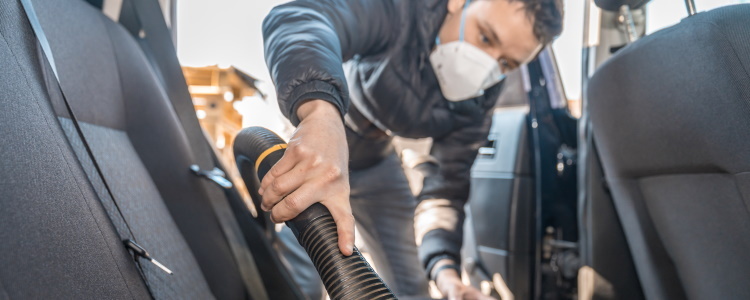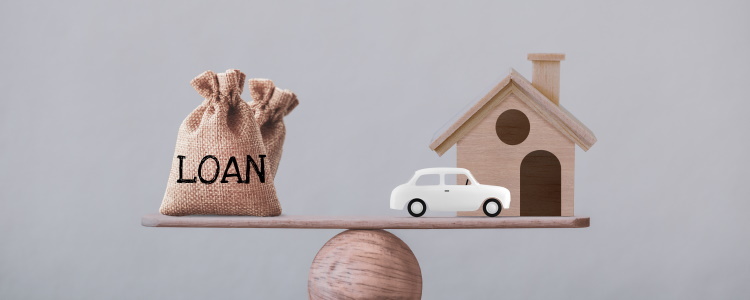When you have credit issues, it helps to walk into the car buying process prepared. We’ve got a list of seven things to consider, prepare for, and do, all before you head to a lender or dealership for your next auto loan with bad credit.
1. Check Your Credit
If you have credit issues, you should know where you stand. Right now, you can request your credit reports for free, weekly, until April 2021. This is a great opportunity for credit repair and learning where your credit stands every week, so you can spot your credit weaknesses and strengthen them up before you apply.
You can also look through your reports for errors, duplicates, or just old accounts and work to clean up your reports to help boost your credit score. Auto lenders review your reports, so you should know what’s on them before they pull them. You can also check your own reports without worry, since checking them won’t harm your score.
You can check your credit score in many different ways. See if your bank or credit card provider offers free access to it. If not, you can pay a small fee to get it from FICO, the credit bureaus, or an online service like our trusted partner. Whatever you do, try to get your FICO credit score, as this is one used most by lenders.
2. Save for a Down Payment
As a general rule, you’re going to need a down payment to get into your next car loan if you have bad credit. If you work with a subprime auto lender (aka a bad credit auto lender), expect to need at least $1,000 or 10% of the vehicle’s selling price as a down payment.
You can always put down more than the minimum amount required to help lower your monthly payment, or possibly help get yourself into a nicer car. If you have a vehicle that you’d like to finance but the monthly payment is over your budget, a down payment can help you close that gap.
3. Prepare Your Trade-In
 If you don’t have the entire down payment amount you need in cash, you can also use an equity trade-in. For a trade-in to help you meet a payment requirement, you need to either own the car outright or the vehicle has to have equity.
If you don’t have the entire down payment amount you need in cash, you can also use an equity trade-in. For a trade-in to help you meet a payment requirement, you need to either own the car outright or the vehicle has to have equity.
If you owe less than what car’s value, that difference is called equity and it can be put toward your next vehicle’s selling price. If you owe more than what the car is worth, that’s called negative equity, and it won’t help you meet the down payment requirement of bad credit auto lenders.
To get an estimate of how much your trade-in could be worth, you can look up prices on sites like Kelley Blue Book and NADAguides. And if you still owe on your trade-in, contact your lender and request a payoff amount, and then subtract that amount from the estimate you got online to see if you have equity.
This way, you can walk into a dealership with a ballpark estimate of what you may be offered. Just keep in mind that the actual cash value of your trade-in is what a dealer is willing to offer. There’s usually room for negotiation, but you won’t have any bargaining power if you don’t know what your trade-in is worth beforehand!
4. Shop for Auto Insurance Rates Now
If you’re financing a vehicle, you need full coverage auto insurance. Luckily, there are tons of insurance companies out there, and getting a quote is relatively easy (thanks to the internet).
If you have a rough idea of the car you’d like to finance, you can contact an insurance company with the vehicle’s information, and they can usually give you a quote over the phone or even online. This can help you prepare your budget, and you can take your time to shop for insurance while you're shopping for an auto loan.
You’re also going to need proof of car insurance before you can drive your next vehicle off the dealership’s lot, so it's never too early to start comparison shopping.
5. Consider a Cosigner or Co-Borrower
As a borrower with less than perfect credit, it may be worth it to look into enlisting a cosigner or co-borrower to help increase your chances of getting approved. They sound similar, but they have different meanings and can help you in different ways.
A cosigner is someone that lends you their good credit and is legally obligated to make the car payments if you can’t or don’t. They are by no means responsible for paying the car loan with you each month, since you’re going to have to qualify with your income alone to be considered for financing. A cosigner is a last-resort payer on the loan.
Many borrowers ask a parent or a close family member to cosign on a loan with them. If you’re a new borrower or you have bad credit, but you have the income to pay for an auto loan by yourself, this could be the route for you.
A co-borrower, on the other hand, is a life partner or spouse who becomes equally responsible for the car loan alongside you. You and the co-borrower would combine your incomes and expenses together and both gain equal rights to the vehicle if you qualify for auto financing.
If your main issue with getting approved for a car loan is that you don’t have enough income, a co-borrower could be what you need to boost your approval chances.
6. Pay Down Your Debts
When you apply for an auto loan and you have poor credit, your lender is likely to calculate your debt to income (DTI) ratio to see if you can afford to take on a car loan.
This is a simple ratio that compares how much income you’re bringing in each month to your expenses going out. If you have high credit card debt or other loans taking up your income, it could mean your DTI ratio is too high for you to be considered for an auto loan. Typically, bad credit lenders don’t approve borrowers with a DTI ratio of more than 45% to 50%.
You can take a look at your expenses each month and work to pay down your debt to help free up your monthly income if your DTI ratio is too high. As a bonus, if you pay down your credit cards to below 30% of their limit, it helps to improve your credit score!
7. Work With the Right Lender
When you have less than stellar credit, you may find getting approved for a car loan with a traditional lender to be tricky. Lenders from credit unions, banks, and the captive lenders of automakers, tend to prefer borrowers with good credit, so working with a subprime lender that specifically works with bad credit borrowers may be a better route for getting financed.
Subprime lenders have the resources to work with many different credit situations, including post-bankruptcy, tarnished credit, and situational bad credit due to illness or other life events.
They can work with these borrowers because they consider more than just credit score, but subprime lenders aren’t available everywhere. They work remotely through some dealers, so looking for the right lender starts with finding a special finance dealership.
Taking the Next Step in Auto Financing
Preparing for a car loan isn’t always as fun at test driving vehicles – but it can be vital to your success in getting behind the wheel. If you’re ready to take the plunge and look for the right lender for the job, start with us at Auto Credit Express.
We match bad credit borrowers to special finance dealers in their area with the lending options for their unique credit situation. Begin by filling out our quick, free auto loan request form.
















